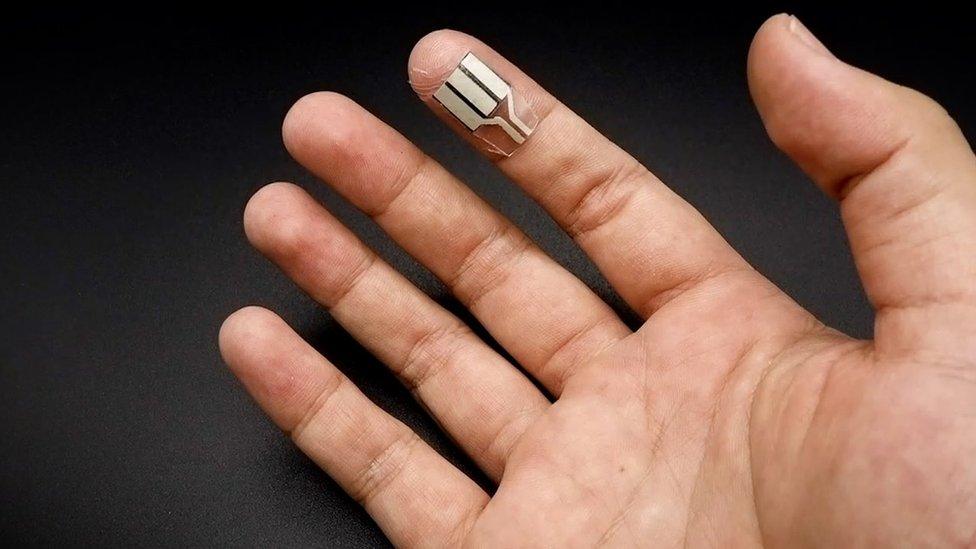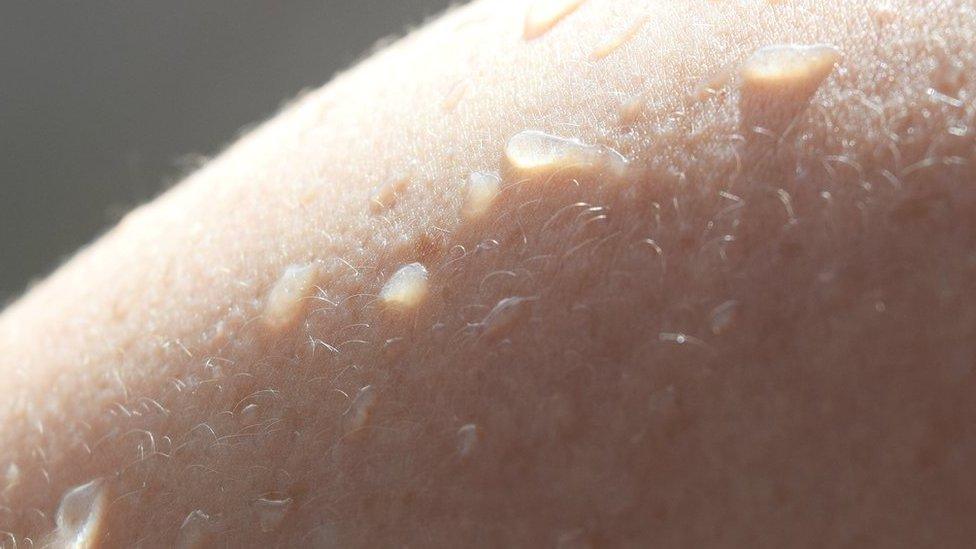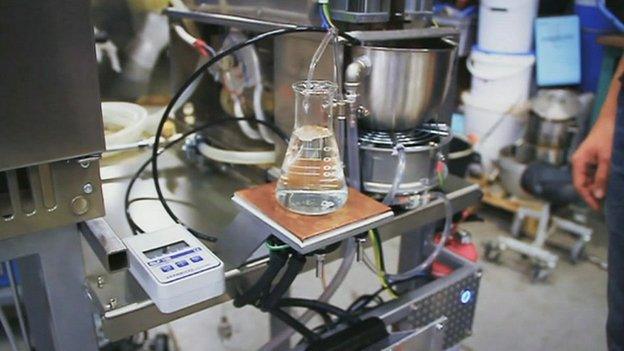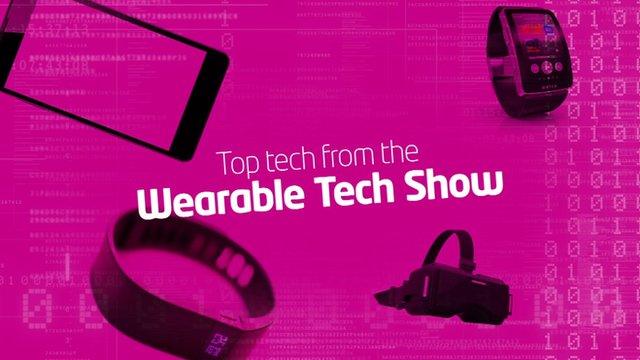Wearable tech: How sweat could power your phone
- Published
- comments

How can this tiny wearable device turn your sweat into power?
Scientists have invented a device that can turn your sweat into power.
Researchers at the University of California San Diego developed the technology, which turns the chemicals in your sweat into energy, by using a thin strip, that looks a bit like a plaster.
This strip could then be wrapped around a person's fingertip, to soak up the sweat it makes.
"Unlike other sweat-powered wearables, this one requires no exercise, no physical input from the wearer in order to be useful. This work is a step forward to making wearables more practical, convenient and accessible for the everyday person." said professor Joseph Wang, who co-wrote the research.
Although the technology might not be able to power your phone just yet, it can still produce a good amount of power, take a look below to find out more about how it works...
How does it work?

The device was built to be super absorbent, like a sponge, meaning it can soak up sweat quickly.
This sweat is then turned into energy by a special padding made of carbon foam electrodes.
These electrodes have enzymes in them, which when they react with the molecules in your sweat, cause a chemical reaction that makes energy.
The electrical energy is then stored in a small device called a capacitator, which can then be used to charge gadgets.

So being sweaty is not all bad!
Your fingertips are really sweaty! Each fingertip is packed with more than 1000 sweat glands, that sweat more than most other parts of your body!
The researchers tested the device out on a volunteer, who managed to generate 400 millijoules of energy - enough to power an electronic wristwatch for a whole day - just by wearing the device on their fingertip whilst they slept for 10 hours.
The researchers have said that this could be 10 times higher if the volunteer wears a device on each finger.
However, the researchers have said that the technology is not yet powerful enough to charge power-hungry gadgets like smartphones, but this is something they're looking into.
"Our goal is to make this a practical device," said Lu Yin, the co-author of the report, "We want to show that this is not just another cool thing that can generate a small amount of energy and then that's it. We can actually use the energy to power useful electronics such as sensors and displays."
- Published19 July 2013

- Published16 March 2017

- Published26 July 2017

